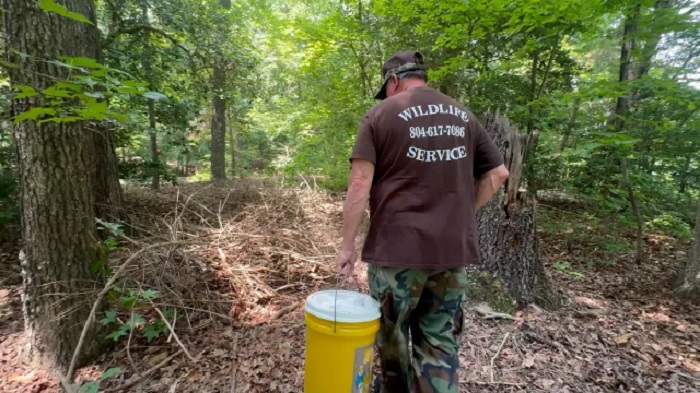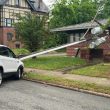RICHMOND, Va. — As temperatures rise and residents take advantage of Central Virginia’s trails and parks, encounters with the region’s most common venomous snake — the copperhead — are also on the upswing. Local wildlife experts are urging caution as sightings and interactions become more frequent.
Rich Perry, owner of Virginia Wildlife Management and Control, reports receiving daily calls and texts from across the state about snake activity.
“We probably see more snakes and have more snake activity than pretty much anybody in the state,” Perry said. “In the course of a day, we can do anywhere from a dozen to two dozen snakes every single day, in people’s houses, cars, garages, crawl spaces, sheds, attics — you name it.”
Among these calls, roughly six daily reports involve copperheads, Perry noted.
On a recent Wednesday in Mosley, Perry’s team responded to a call about a three-foot-long copperhead found in a woman’s yard. The homeowner’s dog had almost stepped directly on the snake while exploring a bush.
“Most copperheads average about a foot in length,” Perry explained. “Finding one three feet or longer is rare, which made this sighting notable.”
Copperheads are notoriously difficult to spot due to their effective camouflage — their tan bodies marked with distinctive brown hourglass shapes often compared to “Hershey’s Kisses.” This camouflage can cause confusion and fear among residents, leading many to kill snakes out of caution.
To address this, Perry established a 24-hour snake identification hotline to help the public distinguish copperheads from non-venomous snakes. “People were killing snakes left and right because every patterned snake was thought to be a copperhead,” he said.
Despite their venomous status, copperheads tend to be shy and docile. Perry warns against handling them but reassures that they will not strike unless provoked.
Central Virginia is home to three venomous snake species: copperheads, timber rattlers, and cottonmouths (also known as water moccasins). However, copperheads are the primary concern in the region.
Homeowners can reduce snake encounters by maintaining tidy yards and removing debris such as brush piles, leaves, logs, and rocks — all of which provide ideal snake habitats.
“Brush, leaves, logs, rocks, all of that stuff is a recipe for disaster,” Perry said. “It’s nothing but a huge welcome mat for snakes.”
Even brief warm spells lasting just a few days can increase snake activity, he added.
While copperhead bites are painful, Perry emphasized that fatalities are extremely rare. “Don’t panic. Nobody’s going to die from a copperhead bite,” he said. “But you’re going to wish you were dead because it’s going to hurt.”
Residents who encounter snakes or need assistance can contact the snake identification hotline at 804-617-7086.











